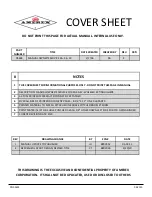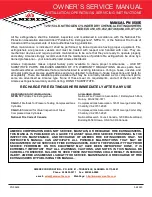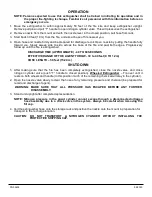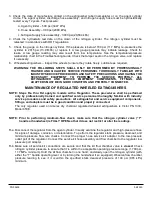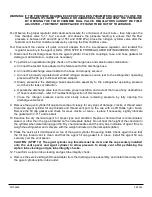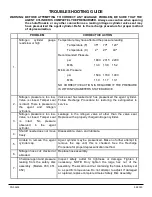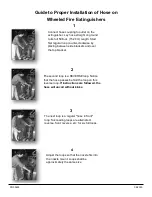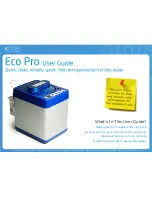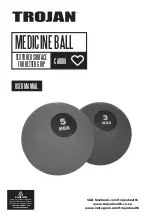
PN 05605
04/2020
OPERATION
NOTE: Persons expected to use this extinguisher shall be trained in initiating its operation and in
the proper fire
-
fighting technique. Familiarize all personnel with this information before an
emergency occurs.
1.
Move the extinguisher to within approximately 50 feet of the fire site and keep extinguisher upright.
Remove pull pin and pull
“
T
”
handle to open nitrogen cylinder valve. This will pressurize the extinguisher.
2.
Remove nozzle from the mount and with the nozzle lever in the closed position, pull hose from rack.
3.
Start back 30 feet (10 m) from the fire, and aim at base of fire nearest you.
4.
Open hose and nozzle firmly and be prepared for discharge recoil. Open nozzle by pulling the handle fully
toward you. Slowly sweep side to side across the base of the fire and past both edges. Progressively
follow up until the fire is extinguished.
DISCHARGE TIME (APPROXIMATE)
-
48 TO 60 SECONDS
EFFECTIVE RANGE OF THE AGENT THROW
-
30 to 40 feet (9 TO 12 m)
HOSE LENGTH –
50
feet (15.24 m)
SHUTDOWN
1.
After making sure that the fire has been completely extinguished, close the nozzle valve, and close
nitrogen cylinder valve (push
“
T
”
handle to closed position).
Wheeled Extinguisher
–
Tip over until it
rests on both wheels and handle (in this position much of the remaining chemical will stay in the cylinder).
2.
Open the nozzle valve slowly to clear the hose of any remaining pressure and chemical (be prepared for
recoil and discharge of agent).
WARNING: MAKE SURE THAT ALL PRESSURE HAS ESCAPED BEFORE ANY FURTHER
DISASSEMBLY.
3.
Stand unit upright after complete depressurization.
NOTE: Nitrogen pressure in the agent cylinder cannot escape through a disconnected nitrogen
hose assembly due to a check valve in the system. Always be careful when removing the
fill cap.
4. Coil the extinguisher hose onto the storage rack and position the nozzle onto the mount in preparation for
transport to the recharge location.
CAUTION: DO NOT TRANSPORT A NITROGEN CYLINDER WITHOUT INSTALLING THE
PROTECTIVE SHIPPING CAP.

